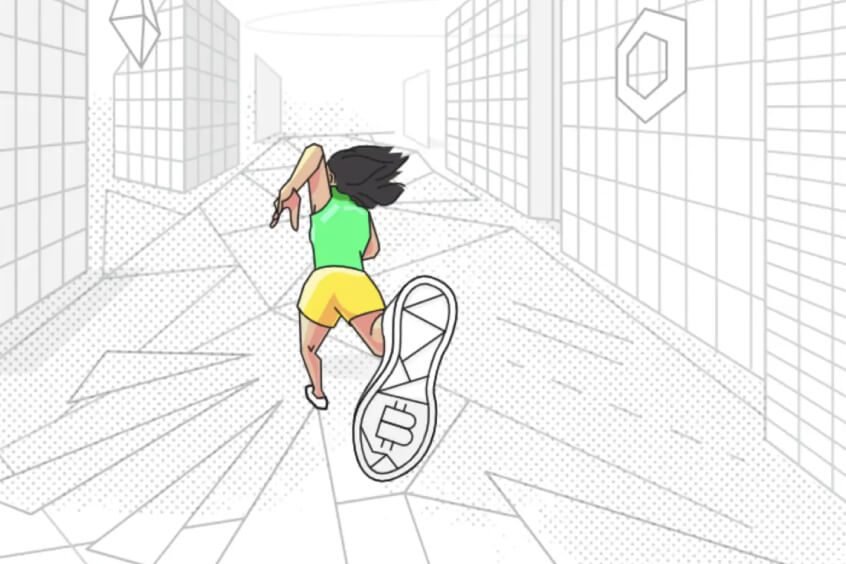StepN announced its Decentralized Exchange on June 10th via its official Twitter channel. The announcement was a hot topic discussed among the community of StepN app users. This exchange has not been launched officially. However, the announcement signals its arrival soon.
Table of Contents
The phenomenal StepN move2earn
The lifestyle app requires a new user to make an initial investment, which can range from less than $100 to more than $3,000. In exchange, the user receives an NFT (in StepN‘s case, a digital shoe) that allows them to start earning money. The user can earn some of the company’s signature tokens (Green Satoshi Tokens, or GSTs) by exercising, but only for a limited time each day (say, 10 minutes).
Furthermore, when the user’s shoe reaches level 30, they can earn some of the game’s governance tokens (Green Marketplace Tokens, more commonly known as GMTs). GMT can currently be used for a variety of in-game mechanics, including leveling up NFT Sneakers past certain level thresholds, minting various high-rarity NFT Sneakers, and more.
Players have the option to cash out, but the game provides an incentive not to: They can frequently earn more money per day if they reinvest the money back into the system, such as paying to upgrade their NFT shoes or purchasing more of them, allowing them to earn for longer periods of time each day. The NFT shoes can then be sold (or even leased) to the highest bidder. StepN makes money from all of this activity by charging a tax on in-app activities like NFT trading and minting, as well as rentals.
StepN’s DEX empowers users in several ways
Firstly, users will be enabled to make any in-game exchange transactions within the Solana network directly without an independent front end. Notice: this is only for StepN app users.
Secondly, by launching the DEX, StepN is going to encourage users to add liquidity pairs, allowing anyone to provide liquidity to GST/USDC and GMT/USDC pairs. Certain benefits will be bound to liquidity providers. Details will be announced soon! Finally, StepN will make it possible for anyone to create liquidity pools for other tokens. As a result, it will function as a multi-chain.
The swap within STEPN will charge a 1% trading fee. This 1% fee includes:
- 0.3% will be rewarded to the liquidity providers.
- 0.6% will be held at a separate address in order to contribute to the STEPN ecosystem. The potential use cases will comprise of: a) GMT buyback and burn; b) NFT sneakers buyback and burn; c) Support ecosystem building events; and d) Community giveaways and raffles.
- 0.1% will be used for future development work.
Along with the DEX, StepN also introduces “minting scrolls”, which are to solve another problem with its users. They recognized the fact that not all users are walkers. Some people are only interested in minting shoes and selling them for a profit. As a result, it has introduced minting scrolls, which will be required for the production of sneakers. When two pairs of sneakers were combined, a new shoebox was created. Minting scrolls, on the other hand, will now be NFT and can only be obtained by walking. This action may put a stop to the overproduction of digital shoes. Scrolls, on the other hand, can be resold over time.
OpenSea currently has 91.7K pairs of StepN digital shoes with a floor price of more than 11.5 SOLs.
The STEPN token has been experiencing a dramatic fall for a while now. This dramatic shift in value is unexpected for a high-quality app reaching out to users and introducing its tokens. The game, however, intends to limit GST withdrawals and introduce a new token, GMT.


 Tiếng Việt
Tiếng Việt

Related Posts
Tago pioneers in deploying blockchain to solve mental health problems
DarePlay to introduce The Next World, the e-sport Call-Of-Duty game
Minting & upgrading of Cronos NFT collection CroWitches are coming
GameStop NFT announced the release of GameStop NFT marketplace
Cronos chain has exceeded 50 M transactions
FootEarn to be one of the most anticipated 3D football games in Q3